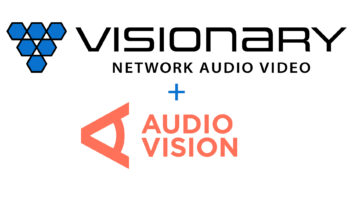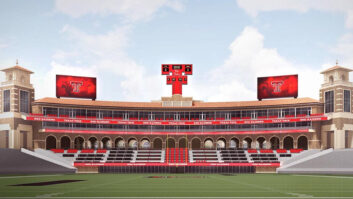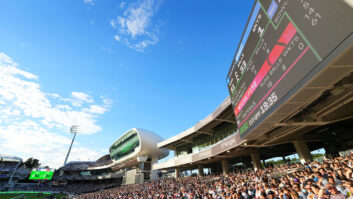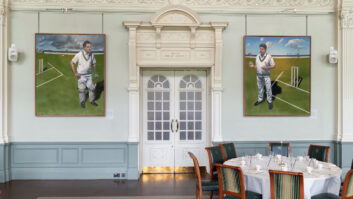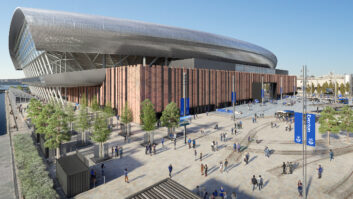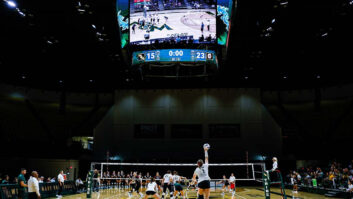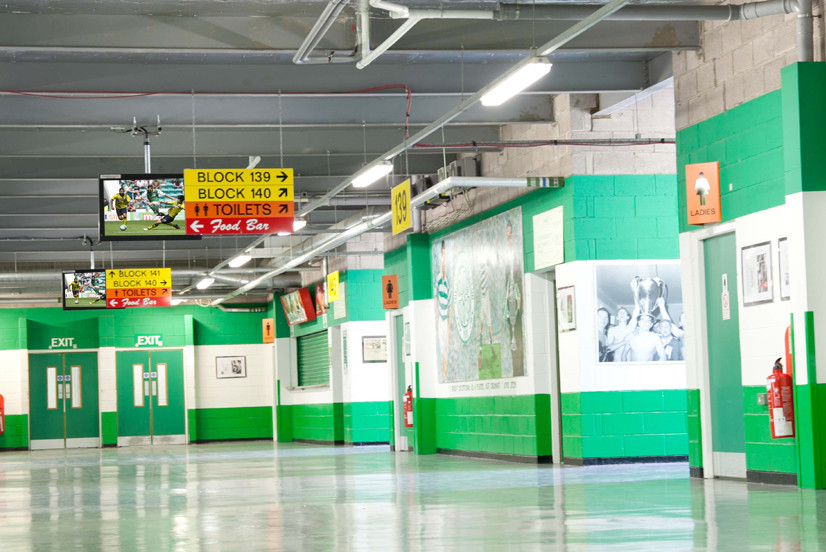
Having previously considered the rise in sports venues as content creators and the production models and content types being utilised, David Davies reports here on the importance of the infrastructure decisions venues make now and the effect it will have going forward, as well as the predicted rise in IP-based production.
For venues thinking about the future, the decisions that are being made about infrastructure now are perhaps more crucial than ever before. This is due in no small part to the explosion in bandwidth requirements that is almost certain to take place over the next few years. With many fans wishing to access high-quality replays and additional content while they are inside the venue, it stands to reason that WiFi networks will need to be expanded and strengthened. The current emergence of 4K content is also going to add to the bandwidth burden.
But with content also likely to take on new and unexpected forms as demand grows, the impulse to embrace IP-based production will also be difficult to ignore. “There is a tremendous amount of interest in the industry around the topic of IP workflows,” says NewTek director of sales east, EMEA, Chris Waddington. “With an Ethernet network in stadium, it is going to be much easier to deploy cameras as and when you want them. Our NDI (Network Device Interface) protocol affords you the opportunity to bring different types of technology into the production process, plus you’ll be able to broadcast to more screens, more devices, more platforms and therefore, more people.”
Launched at IBC2015, NDI enables multiple video systems to identify and communicate with one another over IP, and to encode, transmit and receive many streams of high-quality, low-latency, frame-accurate video and audio in real time. The protocol can benefit any network-connected video device, including video mixers, graphics systems, capture cards and many other production devices, including mobile devices.
As a leading developer of IPTV solutions, Tripleplay Services has been well placed to observe the adoption of IP-based solutions at venues throughout Europe. James Keen, marketing manager at Tripleplay is sure that the trend is ongoing, although inevitably the nature and extent of deployments will continue to “vary massively in line with individual budgets and demand. For example, I know of clubs that have spent upwards of half a million pounds on digital signage IPTV systems, while some at the other end of the market may spend in the region of £30,000 or so.”
But even the smaller clubs can benefit from the type of installation where bespoke content and subscription channels can be distributed to VIP suites and corporate boxes as a further way of enhancing the experience before and after matches – with the obvious commercial possibilities this connotes.
Ain’t seen nothing yet?
While all the vendors who spoke to Installation for this feature remarked upon current strong activity levels, it is clear that the next few years are going to witness a further explosion in demand for content and distribution solutions. Alongside demand from the main mass-appeal sports, enquiries are also coming from “velodromes, swimming centres, horse-racing tracks and so on. We are registering a significant increase in demand for more effective distribution of material in the stadium [with an] effective network layer at the core of the solution,” says Colin Farquhar, CEO at Exterity.
That solid networked foundation is likely to become even more crucial as European countries follow the US lead on “match-day production, where everything is preplanned and produced”, says Keen. “With American football, for example, there is quite a broad scope for production as it can take 4.5 hours to finish a one-hour game! But here in the UK we are starting to see that kind of experience being emulated with fan zones and public areas set up with screens to show live produced content and interviews. I think we will see more and more of that kind of initiative as organisations work to maximise revenue generation.”
Ten years ago the complexity and cost of implementing a broadcast-quality infrastructure would have been prohibitive for all but the top-tier venues. But thanks to the advent of more cost-effective and user-friendly solutions, the ability to have a high-quality production infrastructure has now been brought within the reach of a sizeable majority of clubs and organisations. Simultaneously, the smartphone revolution and ever-growing numbers of social media platforms have heralded the possibility of engaging with audiences in new ways – and thus opened up new methods of generating revenue through subscription and advertising. So while a great deal has already happened in this area, it’s difficult not to conclude that it’s really only the tip of the iceberg when it comes to this exciting new sphere of content creation.
